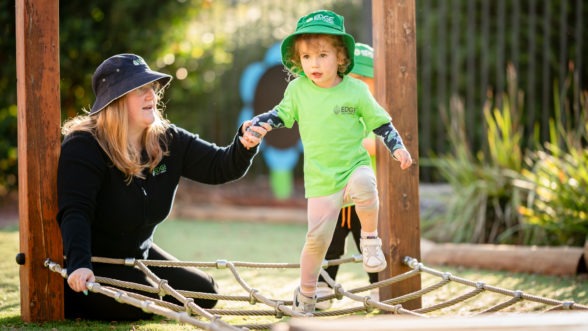
Useful tools, Wellbeing
Useful tools
25 March, 2025

Tired cranky kids are no fun. Neither are kids who are full of beans at bedtime when you’re desperate to hit the hay too. So, what’s the solution?
Routine
Our bodies need sleep – and just the right amount. Giving your child time to rest at the same time/s each day works with their internal clock and helps them to fall asleep. Having a bedtime routine, such as bottle/snack, story, sleep, can also help them to wind down and prepare their bodies and minds for rest. Some children find listening to soothing music or an audiobook helps them fall asleep, while others prefer a quiet space. Giving children opportunities while they are awake to be active, play and give their minds and bodies a workout also helps to make them tired, which in turn helps them to sleep.
Children’s needs change
Children go through an extraordinary amount of growth in their first few years and much of that growth is done while they’re sleeping. It’s vital they get enough sleep to support their growth, brain function, overall health and, let’s not forget, their mood! Newborns seem to sleep all the time, while babies need two daytime naps. Toddlers drop to just one daytime nap around 13-18 months old and young children should be able to get through the day without a nap once they start school at 4-5 years old.
Know the signals
If your child doesn’t seem tired at bedtime, needs endless stories to fall asleep, starts waking in the night or super early in the morning, that’s a good indication their sleep schedule needs tweaking. If children are getting too much sleep during the day, they won’t be able to sleep during the night. On the other hand, it’s important to be able to recognise when your child is tired. Rubbing their eyes and yawning are obvious signs. Other indicators may be grumpiness, acting clingy, crying or whinging or demanding attention. Observe your child and be led by their signals.
Make gradual changes
If you think our child is getting too much sleep during the day, try shortening their naptime. You may need to wake them up so they don’t sleep too long. This may sound crazy, but remember, it’s worth it if it will help them sleep through the night! Reducing the morning nap – or dropping it altogether – may mean you need to bring forward your child’s afternoon nap (and possibly also their lunch). Watch for signals they are tired and respond to what your child needs.
Give yourself a break
Adults need sleep too! If your child has been waking at all hours, there’s a good chance you’re feeling a little tired and cranky too. Be kind to yourself. Call on family or friends to lend a hand so you can catch up on sleep too. When you’re feeling refreshed it will be much easier to respond to your child’s changing sleep needs.